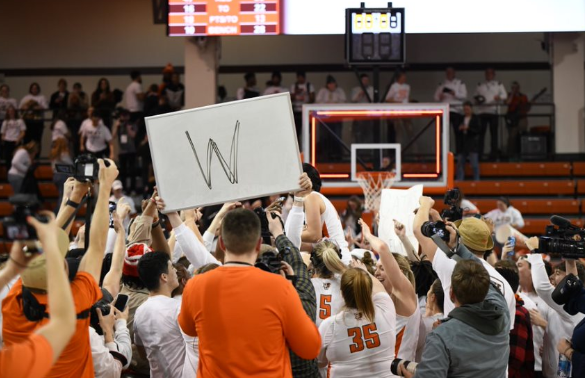On the welcome page of BGSU’s website, President Mazey writes, “The heart and soul of our University is our faculty.”
So, a few weeks ago, when the administration announced that it was axing 100 faculty positions, was it cutting out 11 percent of BGSU’s heart? Or was it simply selling 11 percent of BGSU’s soul?
The question is more than just rhetoric. How will a decent student-to-faculty ratio be maintained with so many of the faculty dismissed from the campus?
Mazey has stated that new uses of technology makes it possible to use faculty “more efficiently,” but it’s hard to see what she means.
BGSU’s page on Monster.com provides the necessary clue. There are various postings for administrative positions. Firing faculty naturally frees up some money to hire more administrators, but that’s not where the efficiency comes in. There’s also an ad for part-time adjunct instructors.
So “efficiency” may mean more massive lectures classes with more discussion sections. Or it might mean more and more courses taught by adjuncts — underpaid, overworked, with zero benefits.
That might seem kind of harsh for them, but consider: where is the money going to come from for the sports programs and our top administrators if we keep on recklessly hiring faculty at subsistence wages? Clearly something has to be cut, and that’s “the heart and soul of our University.”
Another potential source of “efficiency” would be to outsource the lectures entirely. Significant numbers of lecture courses are being released (free or for very low cost), online these days — massively open online courses, or MOOCs, in the parlance of our times. Desperate people, like Gov. Jerry Brown of California, have proposed using these to supplement the teaching at universities.
This is a terrible idea. But the Mazey administration has a moth-to-flame-like attraction for every terrible idea in education today. So maybe it’s worthwhile to take a paragraph or two and put this idea out of our misery.
It baffles me, in the first place, that this phenomenon is considered a novelty. The technology to transmit information to thousands of people simultaneously has existed for some considerable time.
They’re called books, eh?
The invention of radio, and then television, enabled mass audiences even more access to information. This kind of media has reached its apotheosis in the internet, which (in case you thought I was about to bash it) is a fantastic way to transmit incredible amounts of information. All competent educators must be resolved to use it to its fullest extent to benefit their students.
But books, radio, TV, and recorded lectures distributed on the internet, are only one-way media, transmitting information from Point A to an indefinite number of Point Bs. They’re just texts that students and educators can (and should) use. They’re not in themselves an education.
Education requires a feedback loop, where the receiver of the information can communicate with the transmitter, and receive further feedback in turn. That’s a labor-intensive, time-intensive process when done well (whether the internet or other electronic media are involved or not). Technology does not really make it more efficient (if increased efficiency means less faculty serving more students).
Less faculty means less opportunity for students. If Mazey actually believes that the faculty are the heart and soul of this University, it’s past time for her to start supporting them — with actions, not just words.
Respond to James at
thenews@bgnews.com







